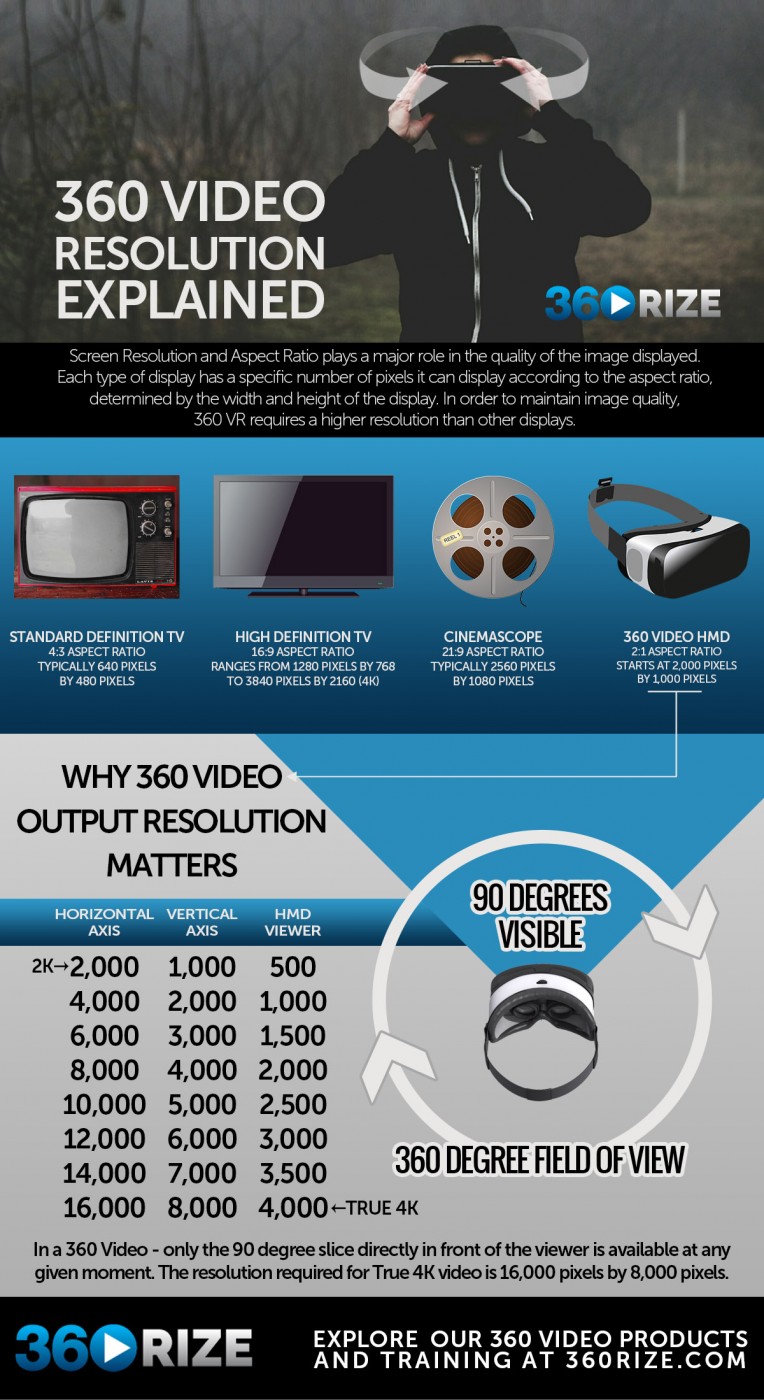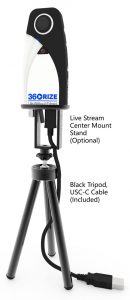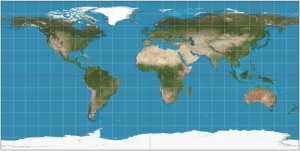As VR technology becomes more commonplace, video quality helps to make a good user experience. It’s important to understand that screen resolution for 360 videos is different than standard screen resolutions.
- 360 Videos are shot all the way around the viewer to create an immersive experience.
A 360 video, or spherical video, is experienced in every direction from the end user. An immersive video allows the end user to look down, up, and in a complete circle from their original position.
Check out some of the 360 videos created with 360Rize equipment here.
- 360 Videos are shot with specific equipment.
360 videos are shot on a variety of systems. Sometimes, an omni-directional camera system is used, and often, a collection of individual cameras are mounted on special systems, like the ones we use at 360Rize. Those individual videos are merged with state-of-the-art software to create a seamless 360-degree virtual reality experience.
- You can only see 90 degrees at a time.
While 360 video features a complete panoramic 360-degree horizontal view and a 180-degree vertical view, it’s important to understand that on most Head Mounted Displays (HMD) a user can only see about 90 degrees at a time. Viewing the entire sphere of the video involves the user turning and tilting their head and body.At any given moment, a viewer can only see about one-quarter of an immersive video– the slice of the image directly in front of them.
360Penguin With Full Setup 360Rize’s new 360Penguin VR 360 Video and Photo camera can shoot up to 6K content and take 7K 360 photo content. And when coupled with the NEW Oculus Go users it makes for a great viewing experience.
- 360 Videos are shot in a 2:1 Ratio.
The pixel ratio is the mathematical relationship between the height of the display and the width of the display.An “old-school” screen is typically a 4:3 ratio.
An HD screen is a 16:9 ratio.
Many modern movie theaters display in a 21:9 ratio.
Equirectangular Worldview in 2:1 pixel ratio. 360 video, however, is shot in what we call an Equirectangular ratio of 2:1
It’s a resolution you are probably very familiar with! If you’ve seen a world map, it is a flat representation of a 360-degree sphere.
While Antarctica appears in this image to be the same width as the equator, we know that flattening the image distorts the actual shape, which is wrapped around the South Pole. The entire bottom edge of the map is concentrated into one point.
- Screen Resolution Matters.
With the understanding that VR technology only really displays the immediate 90 degrees horizontally and vertically in front of the viewer, it’s important to understand that the resolution of that video directly impacts the viewer’s experience.If the video is shot on a 2K 360 video camera, it’s not quite the video quality that it sounds! 2K resolution means that the image is 2,000 by 1,000 pixels. Since they can only see a 90-degree sliver of the image at any time, they’re only seeing an image 500 pixels wide. That’s only 20 pixels wider than a standard definition television.Imagine the difference between a Commodore 64 and a brand new high definition 4K TV. That’s a very visible difference. True 4K resolution in a 360 video means that 4K resolution needs to apply directly to that 90 degrees that are visible in the HMD.360Rize Video Gear uses that 2K image as the starting line, and it can go as high as 16,000 pixels wide by 8,000 pixels high – which provide a true 4K viewing experience for the whole 360 degree image.
If you want to know more about our 360Rize equipment, check out products here.
If you would like to receive some in-depth 360 video training from our qualified 360Rize technicians, check out our training programs here.






You must be logged in to post a comment.